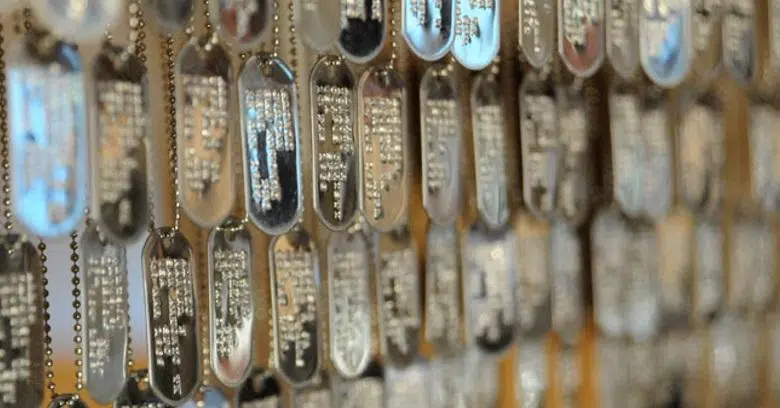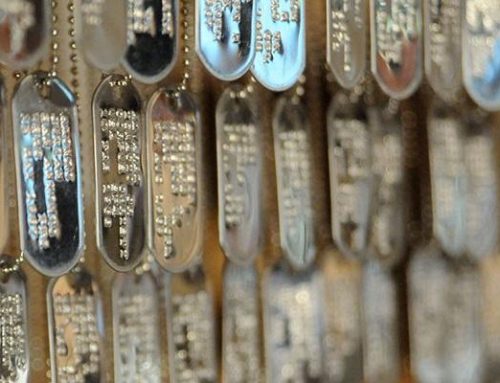Dog Tags – Their Purpose and Origin!
The dog tags worn by soldiers in the Vietnam war and other wars throughout the years are a recognizable symbol of the American GI.
As memorable as they are, many people do not understand their meaning or why soldiers wear them.
Dog tags are much more than just military identification and a memento of a soldier’s service.
From the day of their inception, these bits of metal hold the important responsibility of helping to get fallen soldiers home again should the worst happen while in active duty.
The Issue of Identifying Fallen Soldiers
During the American Civil war, identifying the war dead was a problem that had no good solution at that time.
There was no technology available to test DNA as can be done today and no standard identification method in place for soldiers to practice themselves.
Some pinned notes inside their clothing or backpacks while others carried coins or bits of wood with their names carved in.
Yet most of the recovered bodies without notable identification were buried as unknown soldiers.
It highlighted a need to create a system by which no soldier serving in any war would ever again be buried as an unknown.
Identification pins and badges made by private companies came into production during this era; however, this was not an official solution and not every soldier could afford one.
The Origination of the Dog Tag
With the problem of identifying war dead still a concern by the end of the Spanish-American war, the request to create a soldier ID tag was finally made in 1899.
It would not be until 1906 that this went into effect with the production of a half-dollar-sized circular tag stamped with the soldier’s name, rank, company, and regiment or corps that was to be worn around the neck on a string or chain.
It began with the Army and continued through other military branches until 1917, after which all U.S. soldiers in all branches of the military wore an ID tag.
Though there is speculation about why these ID tags are called “dog tags,” there are two main ideas about why these tags are named as they are:
- The first one originates from WWII days and suggests that soldiers were treated like dogs, so these tags symbolized that thought.
- The other more likely reason for the name is simply the similarity to the useful and convenient ID tags people put on their dogs with no deeper significance.
Dog tagging and license laws had been in effect since the days of Thomas Jefferson.
Dog Tags Throughout American History
Though the tags for the various branches differed slightly at the beginning as did the tags used during different wars, the look and design that we know today was eventually standardized during WWII to be the recognizable rounded corner rectangle that is still used today.
Until the 1970s, the steel tags bore a notch in one corner, a mark that was the source of many strange myths when in actuality, the notch simply aligned the tag on the embossing machine that pressed the soldier’s information into the metal.
The notch was phased out once better embossing machines came into use.
Throughout the years, metal dog tags that are always issued in pairs have been used by American soldiers in various ways.
While one must always be worn around the neck under the uniform, the other was used for varying purposes:
- Soldiers in the Korean war used the second one as a toe tag and it is said this is where the medical use of the term originated.
- Soldiers fighting the Vietnam war tied the second tag to one boot to help identify cases of dismemberment.
Dog Tags Today
Although there are now more sophisticated methods of identifying the remains of soldiers lost in battle, the use of dog tags as a tradition has continued.
These tags are still useful for identification purposes but more than that, they carry important symbolism to soldiers and their families and remain with military members throughout their military careers.
When a military member loses his or her life in active duty, the dog tags are respectfully given to the family or may stay with the fallen military member’s body after burial.
Military dog tags hold immense symbolism and sentimentality for such small pieces of metal to those wearing them and their family members after their passing.



